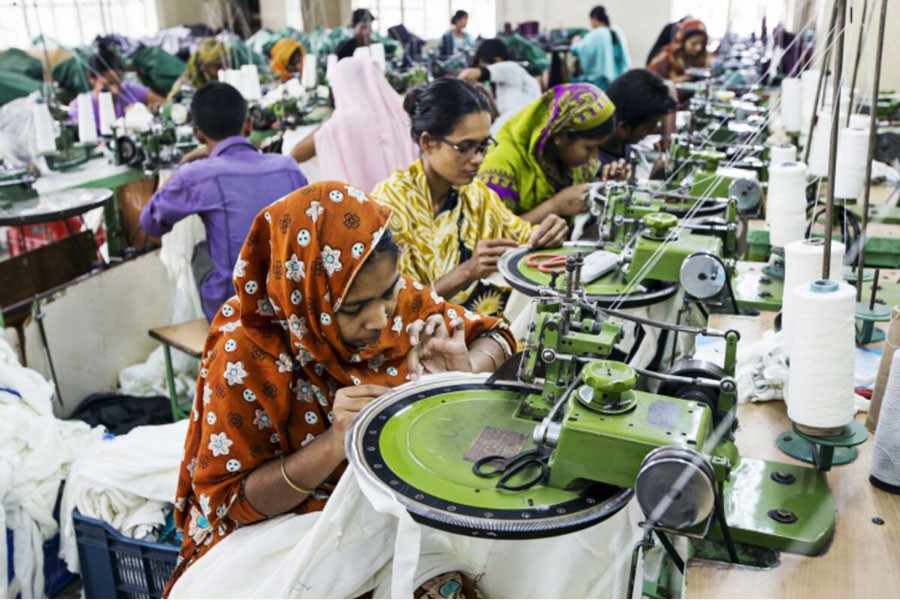
Shifting gears: how can Bangladesh move from middle income to high income status?
Abdoulaye Seck, Hoon Sahib Soh, and Bernard Haven | Wednesday, 11 October 2023

Bangladesh has experienced decades of remarkably successful growth through manufacturing exports.
Bangladesh has been among the fastest growing economies in the world in recent decades, resulting in higher living standards and improved social and health outcomes.
The Covid19 pandemic slowed the pace of growth, but the country recovered relatively quickly.
The recent decades of sustained growth have been driven by the structural reforms of the 1980s and 1990s that strengthened markets and public investments and promoted private sector development, including in trade, finance and land ownership.
The rise of Ready-Made Garments (RMG) exports, which have been central to Bangladesh's growth, resulted from public policy reforms which helped mobilise private domestic and foreign investments.
New drivers of growth are needed if Bangladesh is to realise its goal of becoming an upper-middle-income economy by 2031 and joining the global ranks of high-income economies by 2041.
Bangladesh's graduation from the United Nations' Least Developed Country (LDC) status in 2026 will result in a loss of preferential access to markets by 2029, making this transition an even more urgent agenda.
We have seen that many countries that experience rapid growth and poverty reduction later find it difficult to make the transition from middle-income to high-income.
Avoiding the "middle income trap," will require Bangladesh to evolve and take on the next generation of reforms to sustain growth.
A few other countries, like South Korea, have gone through similar transformation, and Bangladesh can look at them for successful examples.
Much like Bangladesh, South Korea promoted manufacturing exports successfully to accelerate growth.
It was able to sustain growth for several decades to become today the 10th largest economy in the world with a per capita income approaching the average of OECD countries.
In the 1950s, however, it was one of the world's poorest countries, with decidedly bleak prospects.
Its decades of sustained growth allowed Korea to become one of rare countries that was able to transition from a low to middle and finally to a high-income economy.
The recent Bank publication, "Innovative Korea: Leveraging Innovation and Technology for Development," highlights how Korea escaped the 'middle income trap' by transforming its growth paradigm from a state-led to a more private-sector-led model emphasising market competition, innovation, and technology.
Korea liberalised its relatively protective trade regime by lowering import tariffs and barriers to foreign investments, which accelerated its integration into global value chains.
The financial sector was completely overhauled by privatising the banks, including to foreign investors, and introducing a new, independent regulatory and supervisory framework that strengthened bank capital requirements and recognized non-performing loans.
Similar to Bangladesh, Korea initiated its decades of rapid growth by first promoting its labour-intensive manufacturing.
Korea sustained its growth by continuing to evolve its growth model that allowed it to diversify its economy beyond labor-intensive manufacturing and upgrade its industrial technology and competitiveness.
Bangladesh's growth will also need to be more inclusive.
Higher GDP growth in the last decade has not translated to faster poverty reduction as in the preceding past two decades.
Korea managed a relative inclusive growth during its decades of rapid growth, which helped mobilize public support for the structural reforms. Systematic investment in basic education was a critical driver of poverty reduction, facilitating socioeconomic mobility and widening access to the jobs created in an industrialised economy.
Bangladesh can take similar steps to move to its next phase of economic transformation.
The World Bank will continue support Bangladesh's next generation of reforms, building on its strong partnership since independence.
Abdoulaye Seck is the World Bank Country Director for Bangladesh and Bhutan; Hoon Sahib Soh is the World Bank South Asia Practice Manager for Macroeconomics and Public Sector; Bernard Haven is the World Bank senior economist on Bangladesh.